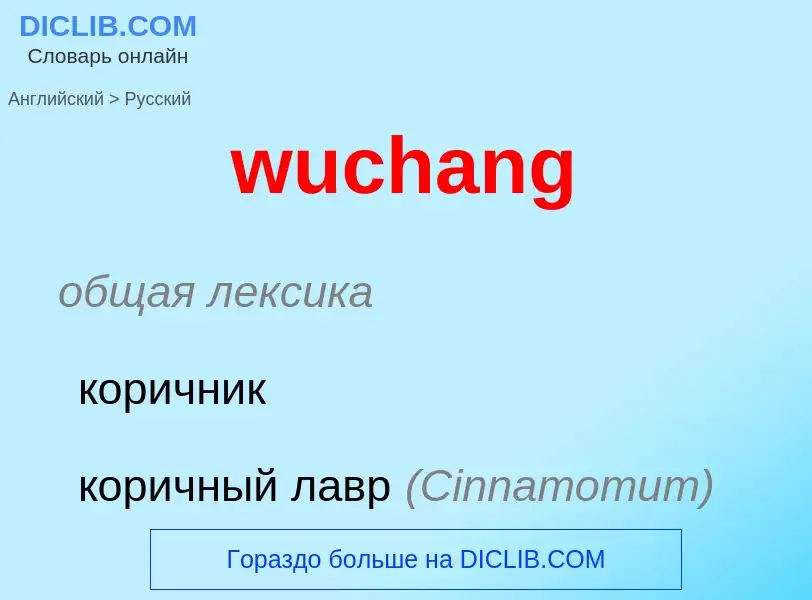Translation and analysis of words by artificial intelligence
On this page you can get a detailed analysis of a word or phrase, produced by the best artificial intelligence technology to date:
- how the word is used
- frequency of use
- it is used more often in oral or written speech
- word translation options
- usage examples (several phrases with translation)
- etymology
wuchang - translation to russian
общая лексика
коричник
коричный лавр (Cinnamomum)
['wu:'hɑ:n]
существительное
география
г. Ухань (общее название городов Учан, Ханькоу и Ханьян)
Wikipedia

Wuchang forms part of the urban core of and is one of 13 urban districts of the prefecture-level city of Wuhan, the capital of Hubei Province, China. It is the oldest of the three cities that merged into modern-day Wuhan, and stood on the right (southeastern) bank of the Yangtze River, opposite the mouth of the Han River. The two other cities, Hanyang and Hankou, were on the left (northwestern) bank, separated from each other by the Han River.
The name "Wuchang" remains in common use for the part of urban Wuhan south of the Yangtze River. Administratively, however, it is split between several districts of the City of Wuhan. The historic center of Wuchang lies within the modern Wuchang District, which has an area of 82.4 square kilometres (31.8 sq mi) and a population of 1,003,400. Other parts of what is colloquially known as Wuchang are within Hongshan District (south and south-east) and Qingshan District (north-east). Presently, on the right bank of the Yangtze, it borders the districts of Qingshan (for a very small section) to the northeast and Hongshan to the east and south; on the opposite bank it borders Jiang'an, Jianghan and Hanyang.
On 10 October 1911, the New Army stationed in the city started the Wuchang Uprising, a turning point of the Xinhai Revolution that overthrew the Qing dynasty and established the Republic of China.


![Jesuit mission]] Jesuit mission]]](https://commons.wikimedia.org/wiki/Special:FilePath/Du Halde, map of Wuchang.jpg?width=200)

